About 9 years ago I started to play baroque pipe organ music. I rather focused on french but on german composers, and as a consequence, I also got in touch with iberian composers like Juan Cabanilles. French baroque organs are different than german ones, and iberian baroque organs are different than french ones. Here are the main differences:
- Often, the space for the organs is extremely limited. As a consequence, the organs often have no or a very limited pedalboard, and the organs often have only one or two keybeds.
- Stops usually are split in the middle of the keybed, so the descant and bass can be registered differently. This compensates for the lack of keybeds, and several iberian baroque organ music expects the instruments to be built like this; the left half of the keybed can be used for accompaniment, the right for solo voices.
- Some reed stop pipes are placed horizontally in the facade of the instruments, providing special timbres. Sometimes such stops can also be found on classical french («Trompette en chamade») or 20th century german instruments (»Spanische Trompete«). But still, the typical sound of iberian reeds is unrivaled.
- Sometimes, in bigger cathedrals, two organs are placed face to face on either side’s wall (not to mention Mafra, where you’ll find the incredible amount of six instruments).
I have read about those instruments, listened to recordings of them, and played a sample set (I do neither have a relationship with the provider, nor do I get paid for this link) of the Segovia organ. Despite digital tools, there’ s still no thing as the real thing. So I spent a couple of days visiting important instruments in portugal.
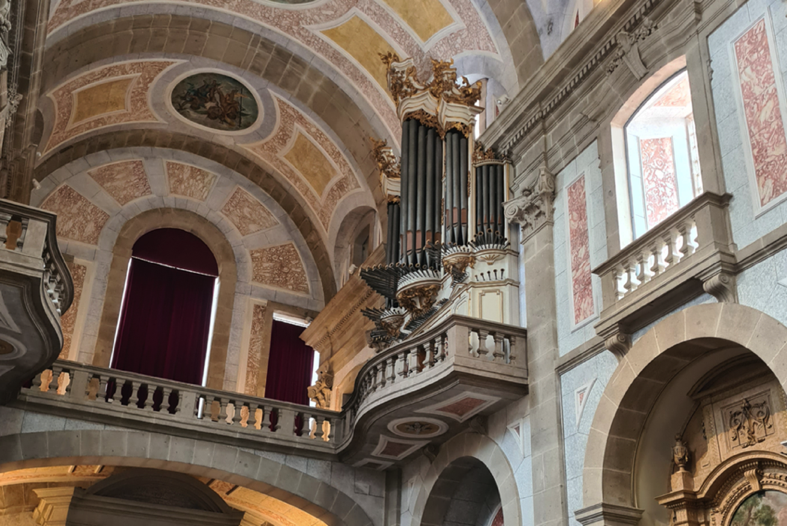
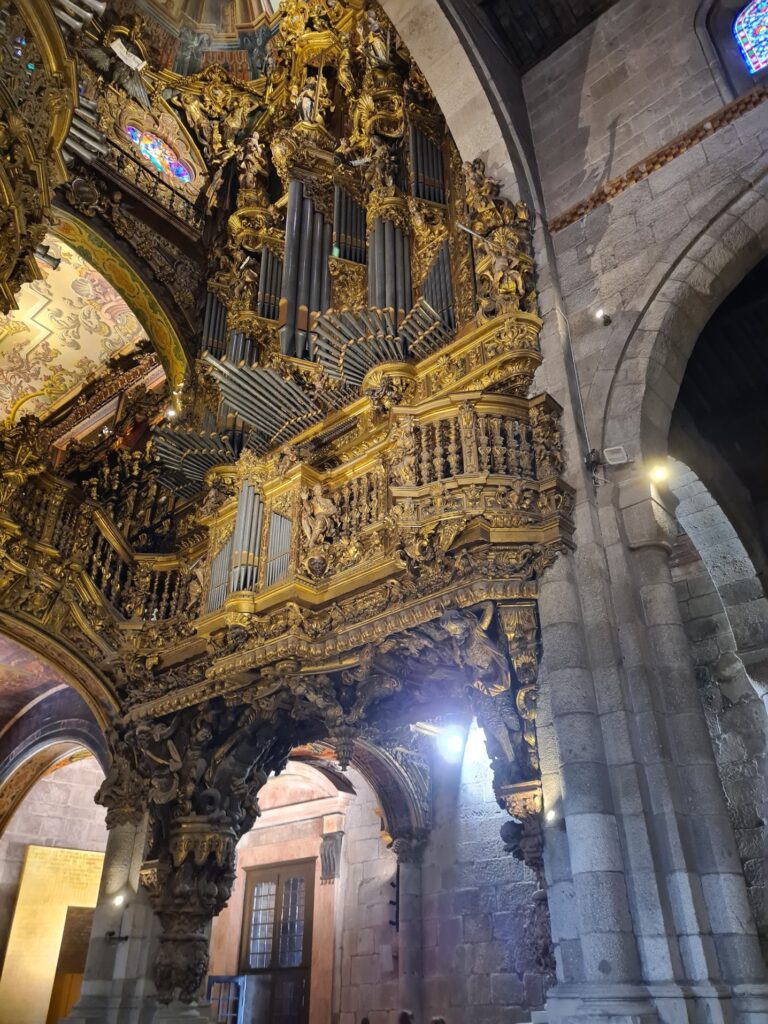
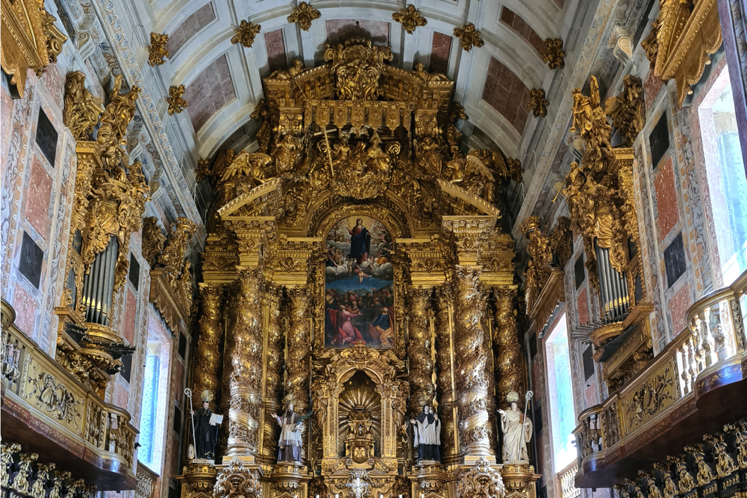
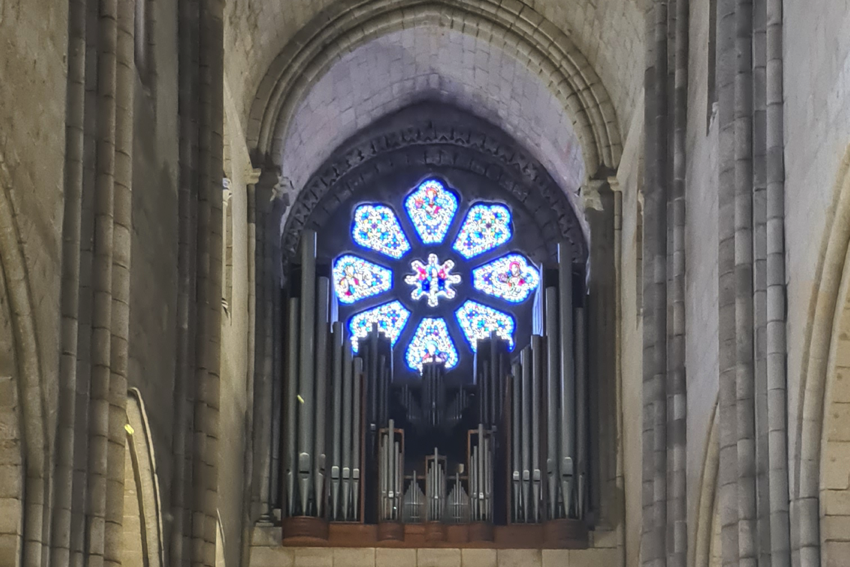
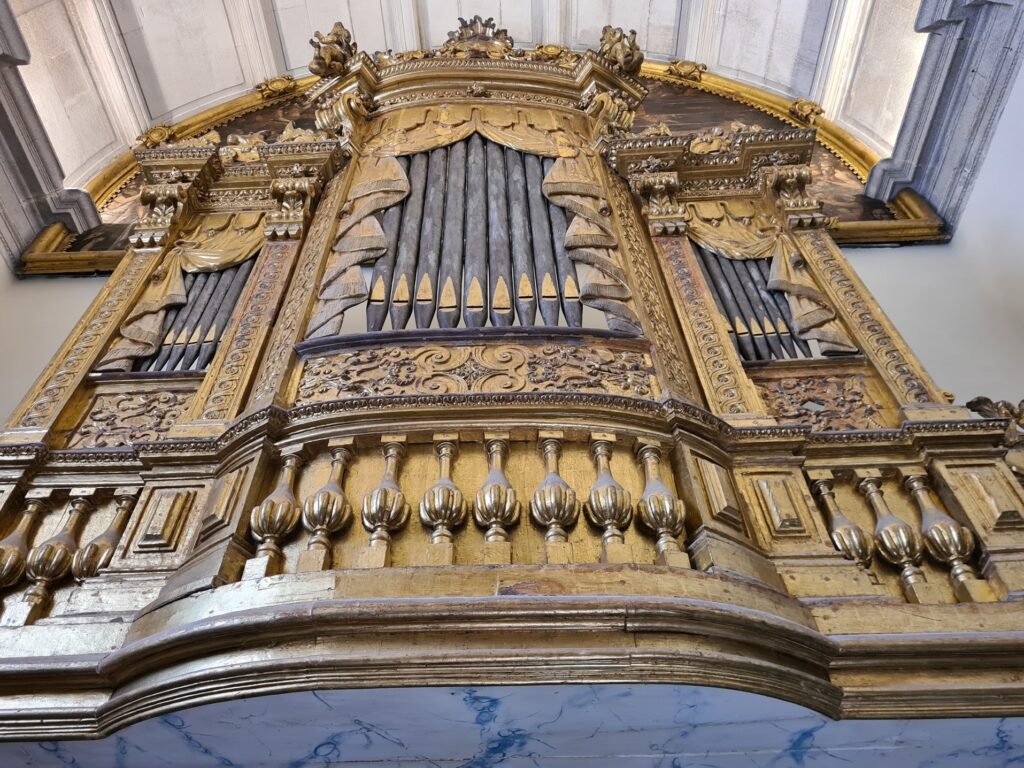
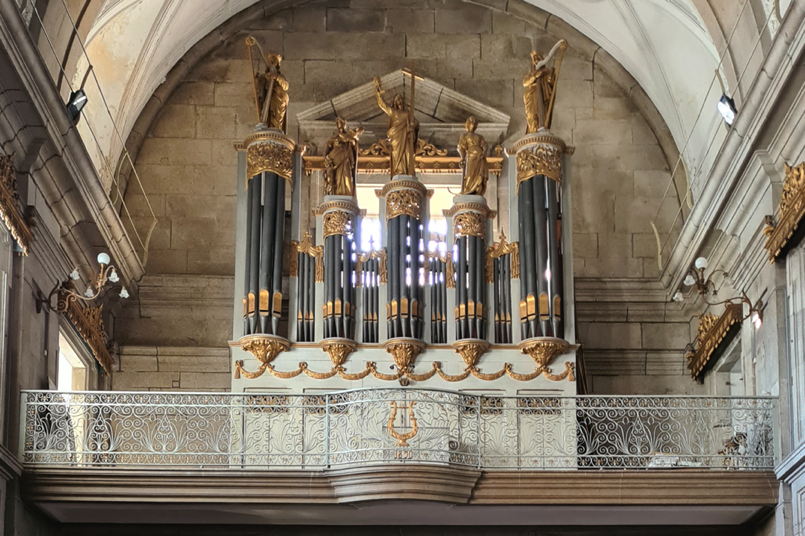
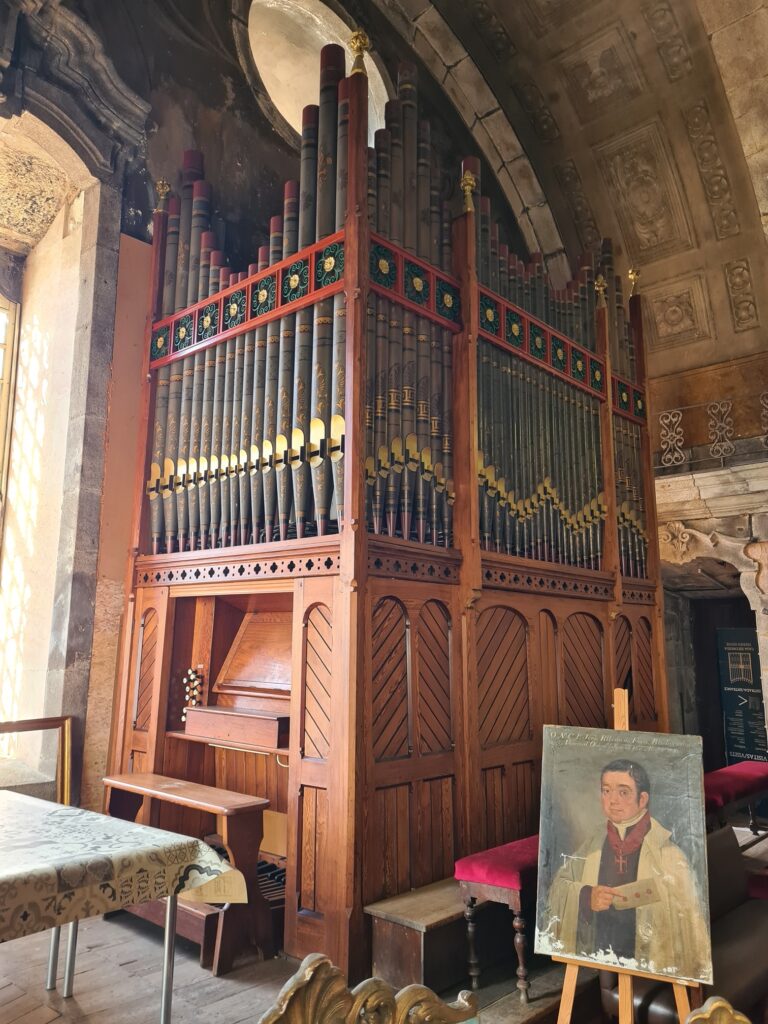
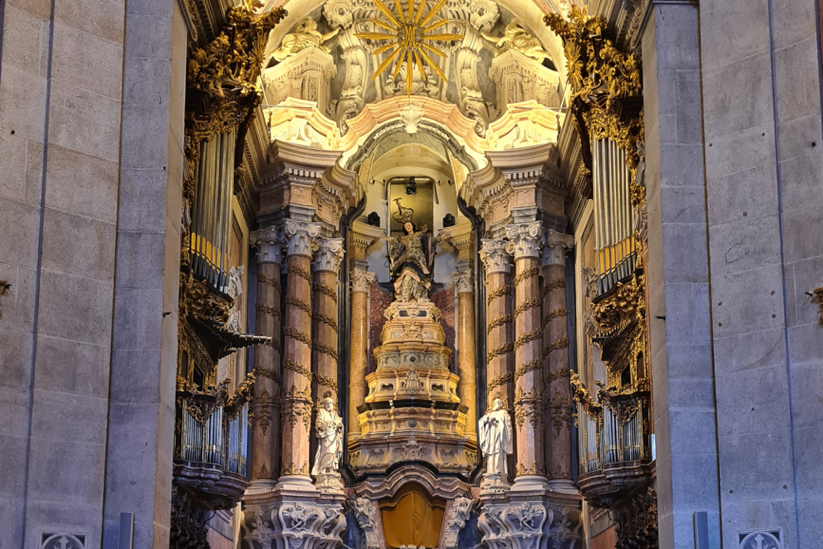
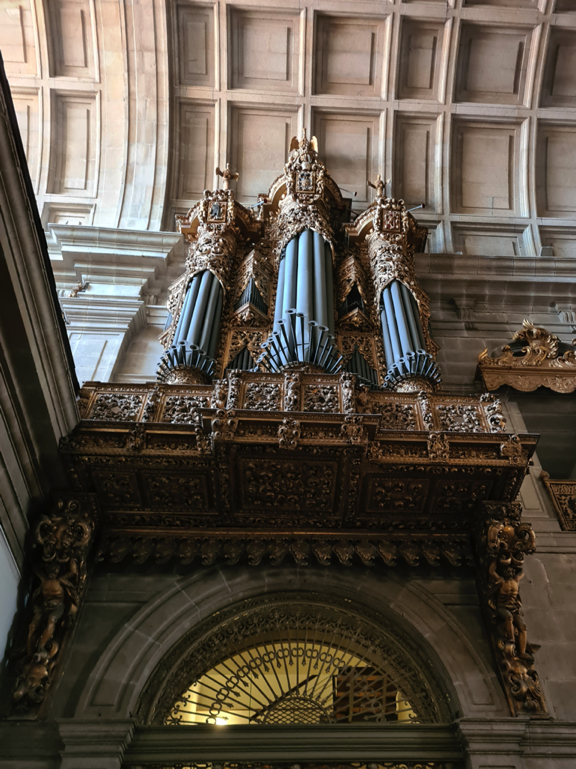
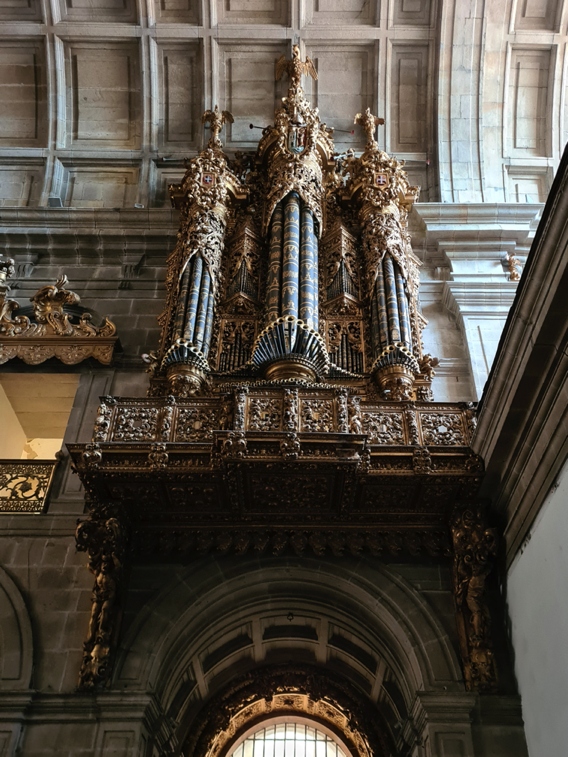
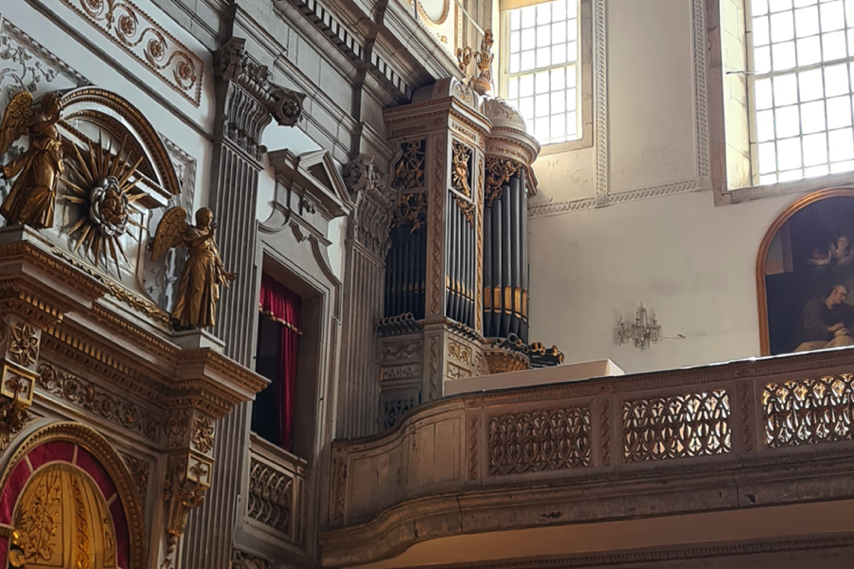
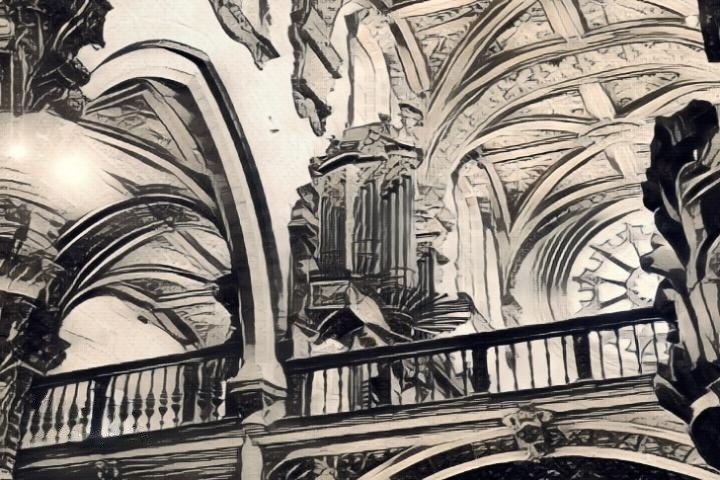
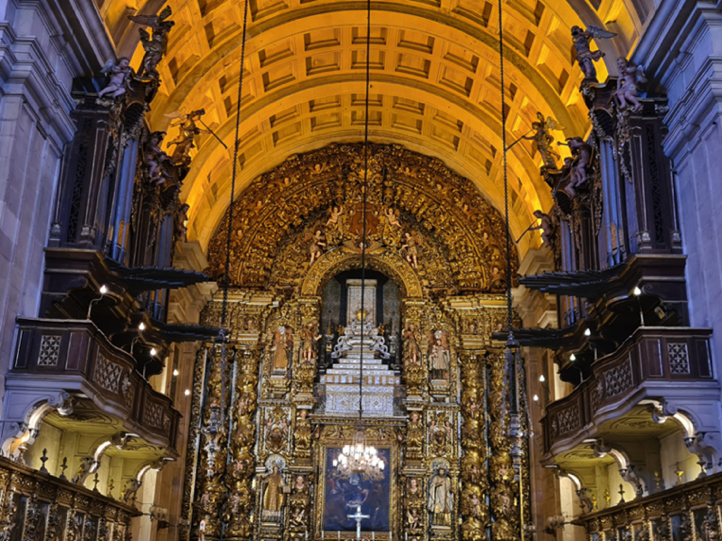
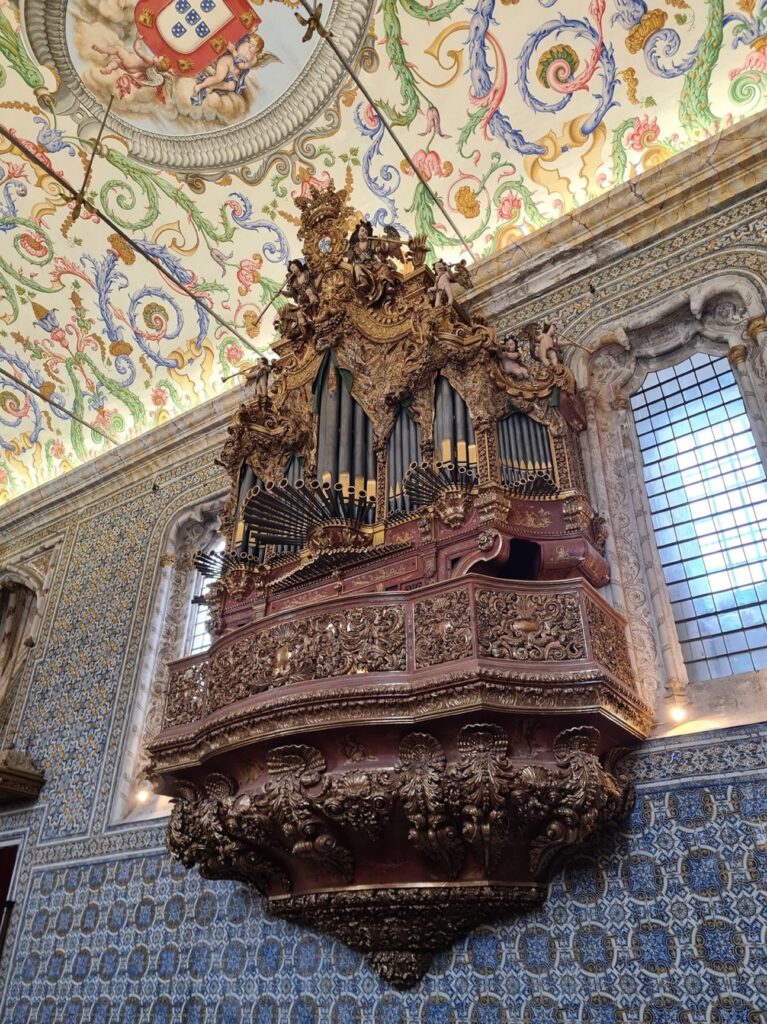
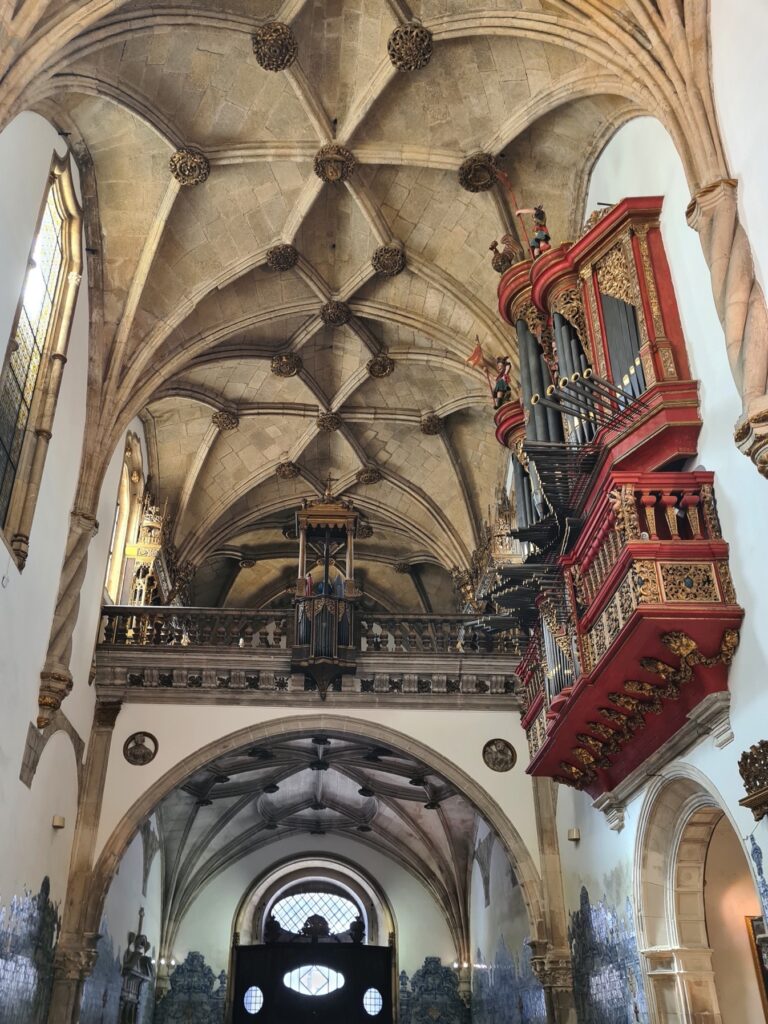
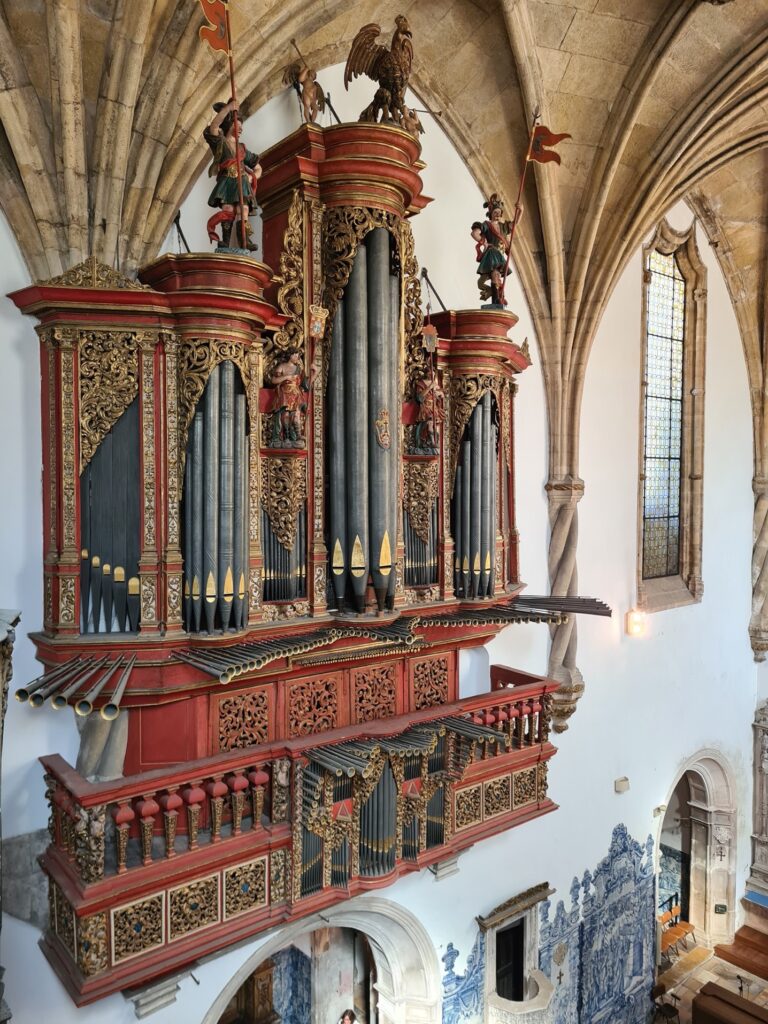
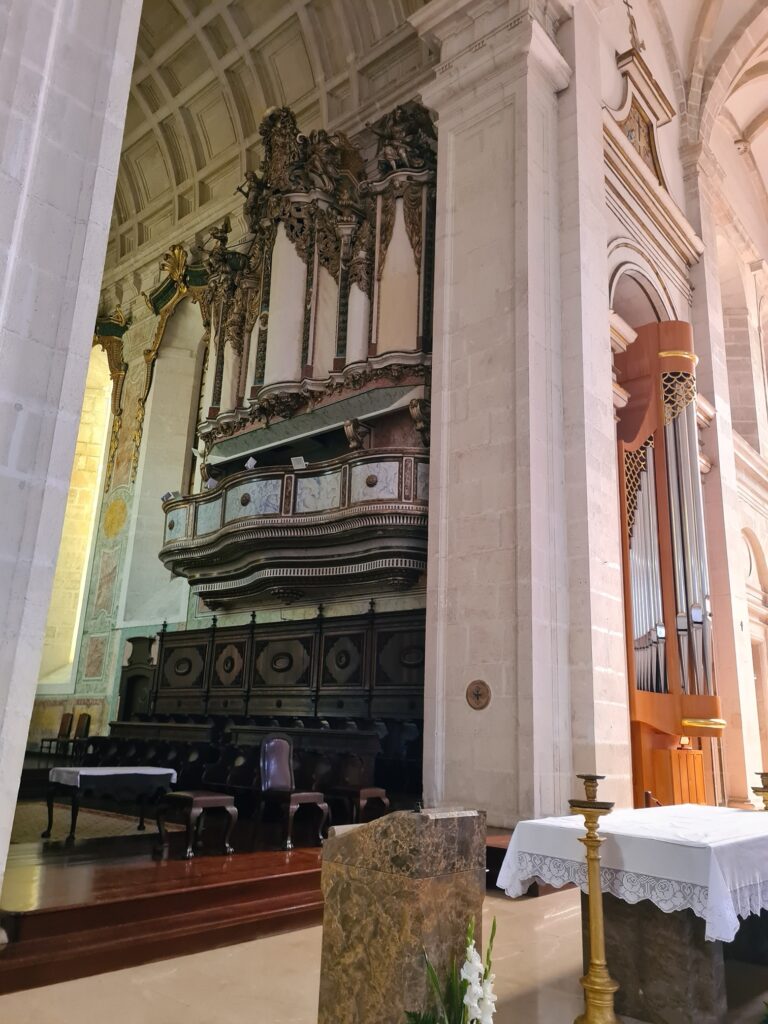
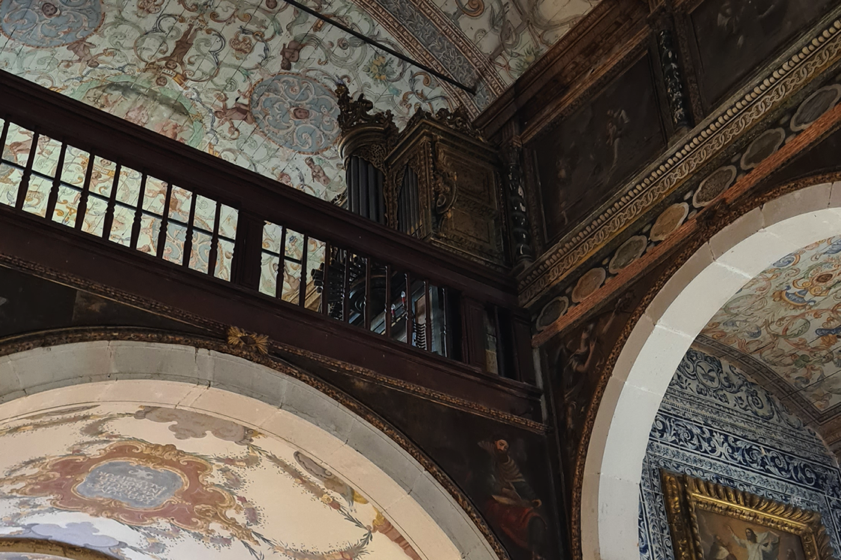
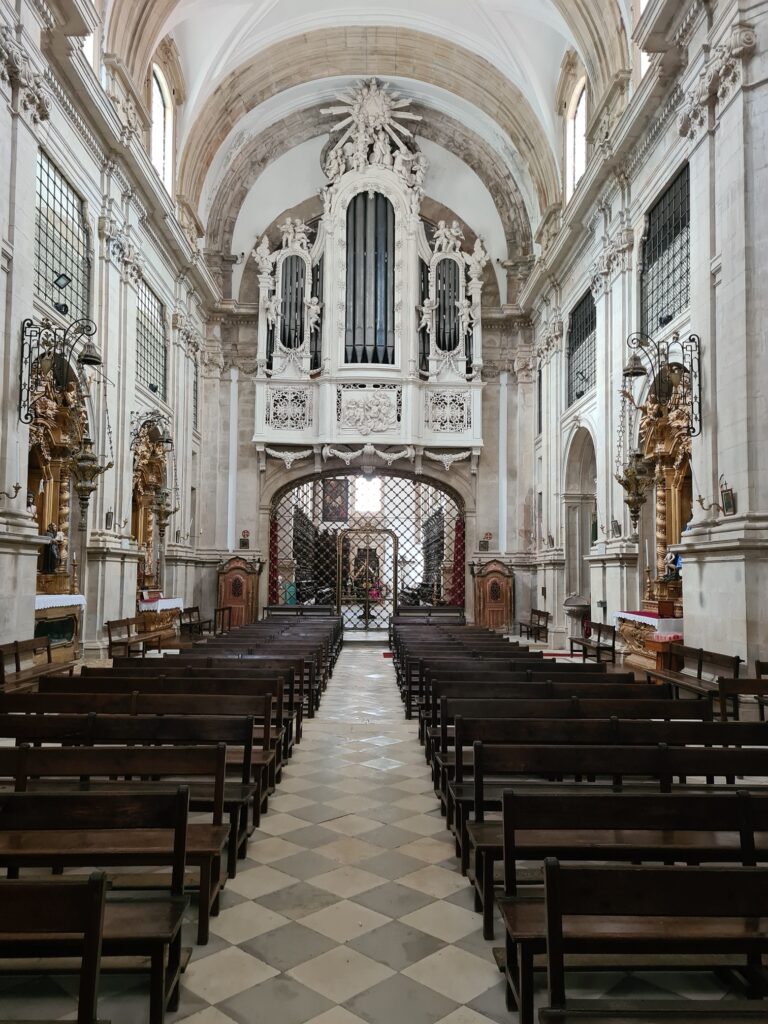
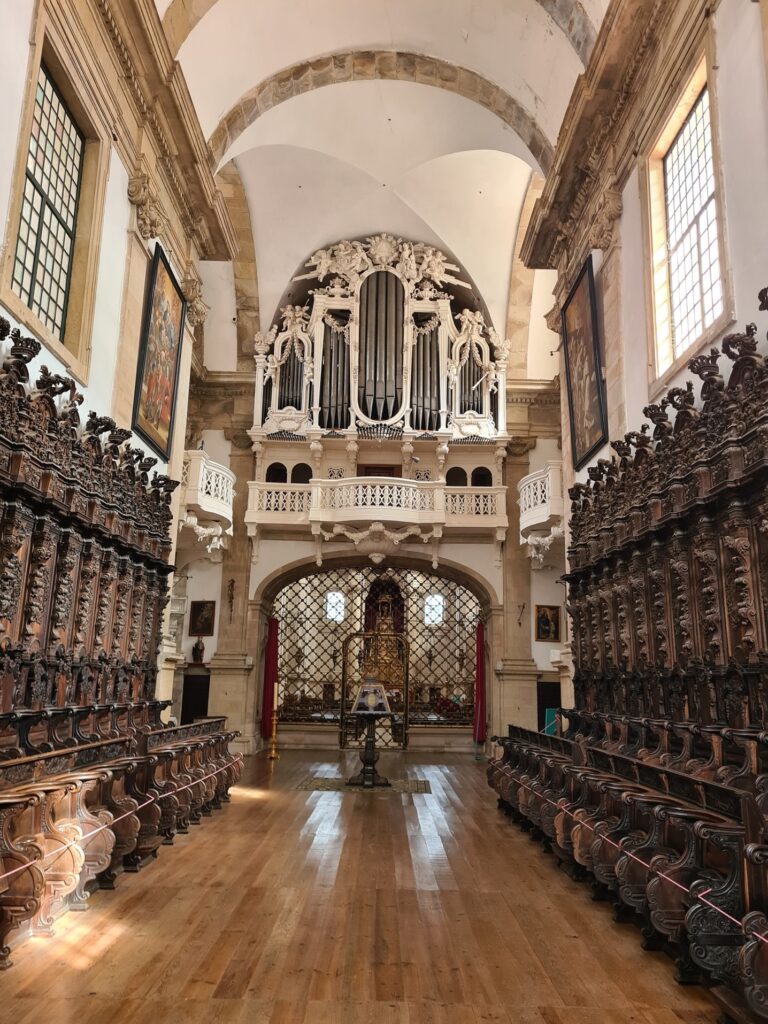
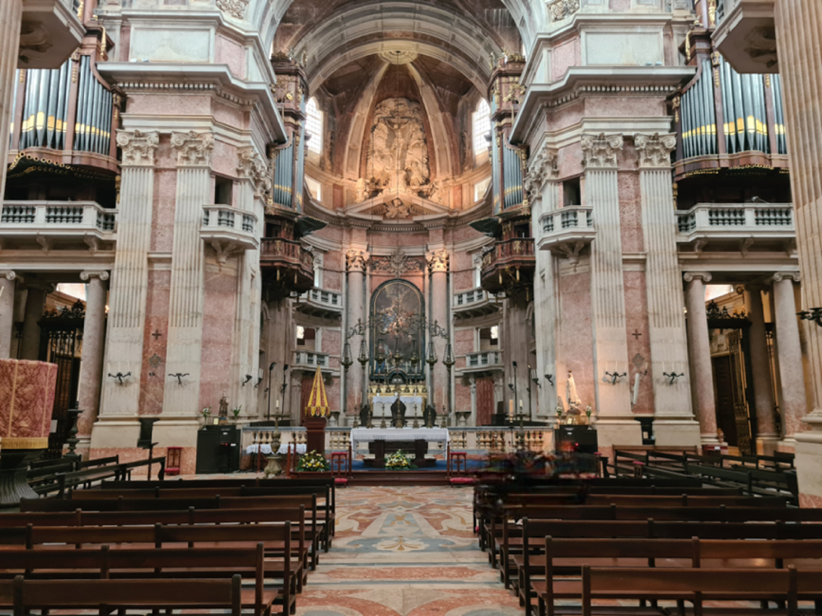
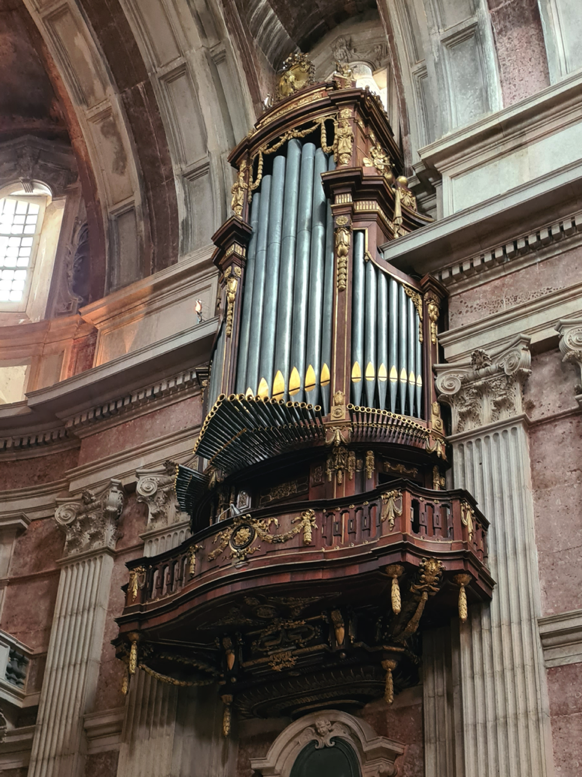
Obviously, portugal hosts several typical iberian baroque instruments. I had good luck so as to listen to three of them. In case you want to attend some concerts as well, events in Mafra can be found here, and the organ festival will be continued in 2025. There are concerts being organized by Coimbra, Arganil, Cantanhede and Miranda do Corvo. This page also lists instruments found in Coimbra. Concerning concerts at the cathedral of Porto, this page may be helpful. Finally, there’s the »Festival Internacional Orgao & Musica Sacra«.
